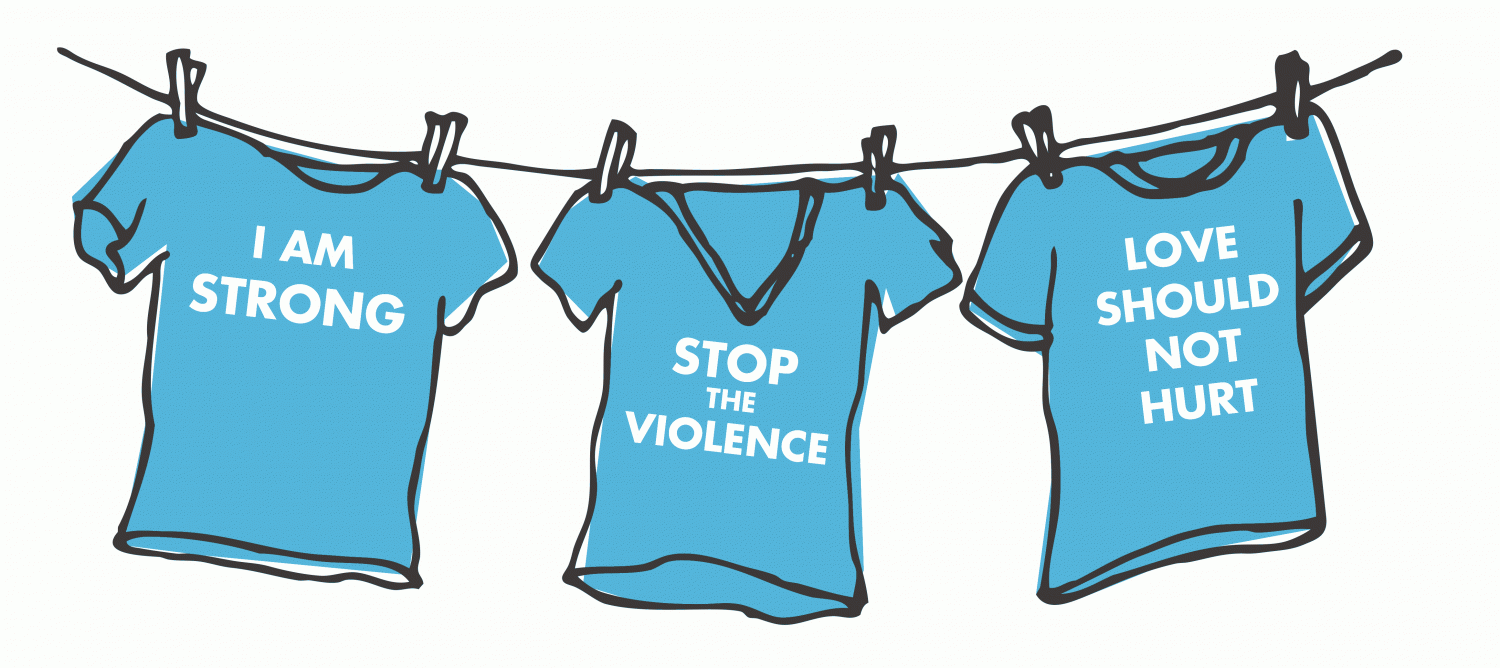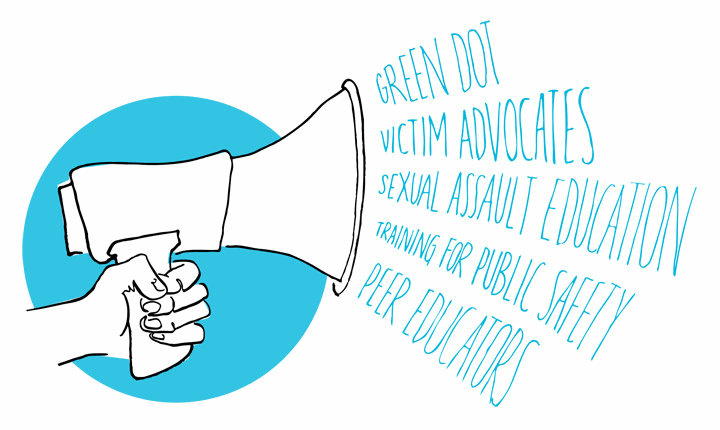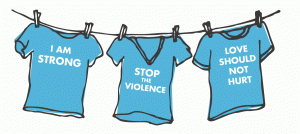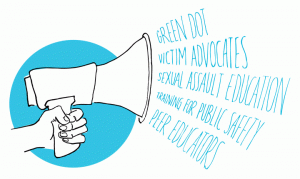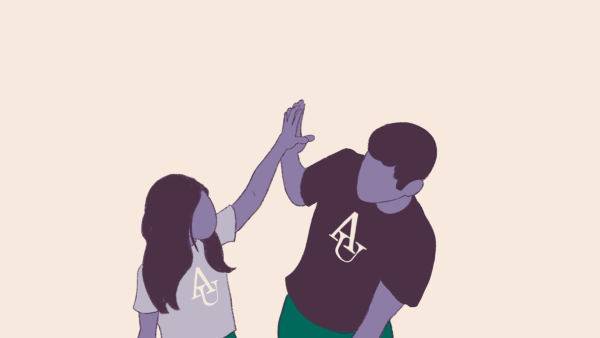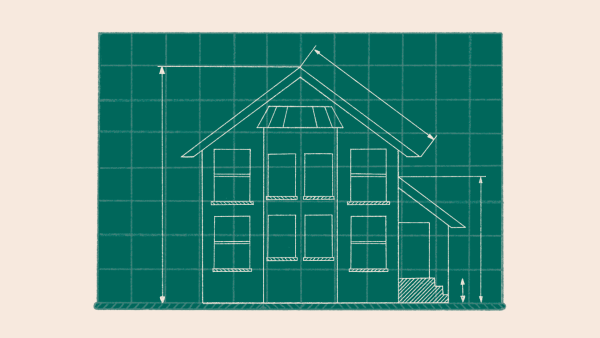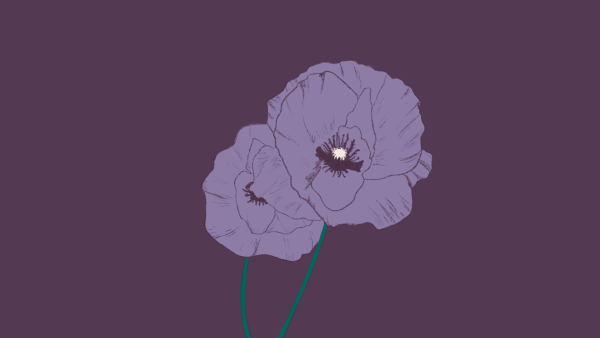A Year After the VAWA Protest: Student Action Leads to Change
These words echoed through the megaphone and onto the American University quad as Nicole Wisler relived her experience as that scared girl. She and many others were protesting the university’s decision to pass up a grant application that could have provided $300,000 to address domestic violence, dating violence, sexual assault and stalking. Wisler’s story illustrated the need for such programs. She explained that while the student who assaulted her understood the most basic definition of rape, “it’s rape if she doesn’t say yes,” he didn’t know the full meaning of the word or its implications.
“He used all kinds of force and very coercive measures to try to convince me to say yes because he thought that this would equal consent, even if it was out of fear for my own safety,” Wisler said.
After saying no and pushing back, she explained to him that if he had sex with her, it wouldn’t be consensual. If he had sex with her, she would take action against him. He continued to pursue her, but finally stopped. Wisler believes he realized she was being serious—it finally sunk in that his actions fell under the definition of sexual assault.
Wisler’s story is only one of many. It’s estimated that about 1 in 4 college students are raped or are survivors of attempted rape. According to the 2008 Core Alcohol and Drug Survey, 6.8 percent of AU students—a number that rounds to about 400—experienced “forced sexual touching or fondling.” And 4.1 percent—roughly 200—experienced “unwanted sexual intercourse” in the previous year. The survey, administered to 37 classes, claims to represent the undergraduate student body in terms of “gender, racial and ethnic composition, and class status.” Next year, the survey will be conducted again.
On that chilly March day last year, protesting students occupied the quad before marching to confront Gail Hanson, Vice President of the Office of Campus Life. Hanson had refused to sign the application for the Campus Grant funded by the Office of Violence Against Women (OVA), a component of the Department of Justice. Without her signature, AU would not be considered for the funding. Hanson said that other university officials higher up than her, like University President Neil Kerwin, had concerns about the grant—namely that it would require mandatory sexual assault education and failure to take part in the education would result in a stop on the student’s account.
Thus, the application students had been working on for months, keeping university officials like Hanson in the loop through the entire process, never made it to the Department of Justice. Campus Grants were eventually awarded to 26 universities, totaling $7,231,923. Many of these grants were given to universities with a significantly more conservative culture than AU, yet these university’s gave the necessary approval.
As previously reported by AWOL, students provided Hanson with an alternative document to sign, asking for her to guarantee that the university would meet major goals outlined in the Campus Grant application with university funds. After editing it heftily, she signed the bottom fifth of the document. Hanson did not make any firm commitments; however, she did agree to meet with students in a forum “if possible.”
A Recent History of Sexual Assault Controversy at AU
During the 2009-2010 school year, The Eagle received some fairly bad press for two contentious articles regarding sexual assault. These articles ignited a discussion about sexual assault on AU’s campus.
A column entitled, “‘Sex’-perimentation defines Welcome Week” described The Eagle’s perspective of a drunken hook-up, but Women’s Initiative said the scenario “normalize[d] sexual assault” and Students for Choice said the article described “an explicit rape.”
It’s three in the morning. You have it inside you right now. It kind of hurts. You’ve had one too many cups of jungle juice. You think his name is Andrew, but you’re not really sure. You thought you would never be that girl, but there you are, in your drunken haze.
The rest of the article continued to explain that the girl should not consider this boy to be relationship material or feel guilty about her “drunken romp” because “everyone does it.” An editorial in response to the article’s controversy described the outrage as “confusing.” Rob Hradsky, Dean of Students, then gave AU students a quick lesson on the university’s sexual assault policy in a Letter to the Editor. He explained that “sexual assault is a more accurate description of this scenario” than a “drunken hook-up.”
Put simply, if someone is under the influence of alcohol or other drugs, as the article portrayed, they cannot give consent. If both parties can’t give consent, any sexual activity can be defined as sexual assault.
Fast-forward to March 2010, almost exactly a year before the VAWA grant protest, when AU found itself in the national spotlight, thanks to Alex Knepper’s column in The Eagle. In “Dealing with AU’s anti-sex brigade.” Knepper described date rape “as an incoherent concept” and stated that if a girl gets drunk at a frat party and goes home with a guy, she’s asking for it.
Let’s get this straight: any woman who heads to an EI party as an anonymous onlooker, drinks five cups of the jungle juice, and walks back to a boy’s room with him is indicating that she wants sex, OK? To cry “date rape” after you sober up the next morning and regret the incident is the equivalent of putting a gun to someone’s head and then later claiming that you didn’t ever actually intend to pull the trigger.
The rest of the article’s tone was equally antagonistic and provocative.
The column sparked an outcry that received national attention, prompting The Eagle staff to apologize for publishing the article and to revise its editorial policies. Needless to say, the controversy surrounding both articles and the discussions they stirred revealed a lack of understanding in the campus community, suggesting a need for an increase in sexual assault and rape education.
Student Efforts against Sexual Assault
Student efforts to address issues surrounding consensual sex and sexual assault started long before last year’s protest.
In fact, since 2004, AU students have participated in Take Back the Night, an international event aimed at ending sexual violence. Last year, Anna Sebastian was so moved by the event she became one of the planners.
“I attended Take Back the Night last year as a freshman and was incredibly moved by the experience,” Sebastian wrote in an email. “I found solace in the community created within that space and I can honestly say it was a life-changing event for me. I looked into get more involved with it almost immediately afterward.”
The event, held on April 9, was among several others in observance of Sexual Assault Awareness month. Another effort students have been working on is the Clothesline Project. For this, statistics, testimonials and moving messages are written on t-shirts and displayed around campus.
Carmen Rios, the current director of Women’s Initiative, created the (con)sensual campaign in 2009, which “works to create safe spaces for dialogue on consent, educate college students about consent and their sexual rights, and encourage young people to integrate consent into their sexual practices.”
Nefertiti Abeja is directing the campaign this year and is currently working on making it more relevant and applicable to AU’s student population. She’s also been working to make the campaign more inclusive.
“We’ve been focusing on queering consensual because when it first started, this was never intentional, but it always tended to take this very heteronormative spin,” Abeja said. “You know, girl at a party, possible male attacker, and so it’s kind of addressing consent in queer relationships.”
Sexual Assault Prevention & Resources for Survivors at AU
Although AU still is not applying for the Campus Grant this year, the protest did not fall on deaf ears. The university has made significant progress in addressing sexual assault issues.
Before the end of the semester of the protest, the part-time sexual assault health educator position became a full-time position renamed Sexual Assault Prevention Coordinator.
On November 1, Daniel Rappaport, AU’s Sexual Assault Prevention Coordinator, and Courtney Brooks, coordinator of the Women’s Resource Center, became victim advocates for students. In this position, they are not required to report instances of sexual assault. Students who seek their support have complete confidentiality.
“Our responsibility is to meet with [students] as many times as they want, as frequently as they want,” Brooks said. “We can accompany them through the legal and judicial process, we can go with them to get off campus resources. The whole point of having a confidential advocate is so they don’t have to go through the process alone, they don’t have to have these conversations alone, they don’t have to figure out where to go. Our job is not to put them in one direction, but to present options and support them through that no matter what.”
Even statistics reporting how many students approach them with instances of sexual assault are confidential. Anna Sebastian, co-director of Women’s Initiative Stopping Violence Against Women, says this is a step forward for the community.
“The university has definitely made progress regarding their sexual assault policies since last year,” Sebastian explained. “It appears that a sexual assault education component will be included in the new student programming for the upcoming class. This is a wonderful step forward, but, at the same time, to think that we did not have this before is a humbling factor to this victory.”
University officials have been working towards including a Sexual Assault Education component in next year’s orientation. Exactly what that will look like is unclear.
“I can say that in terms of more, we absolutely intend for sexual assault to have its own piece of orientation,” Rappaport said. “We’re still looking around to try to make what we feel is the best choice for right now and doing the best that we can under the circumstances, but it’s not going to be a five minutes sort of deal. It’ll be it’s own piece of orientation. I’d like for it to be an hour.”
AlcoholEdu has included a brief section dealing with sexual assault for the past three years.
Rappaport fairly notes that, “considering it being the circumstance of an online education piece, it was pretty good for what it was worth. Do I think that that is all of the education students should receive coming in? Absolutely not.”
Gail Hanson is also on board and agrees that educating students in their first year is important. She has concerns, however, about guaranteeing the program’s effectiveness and students’ information retention.
“When you get to the last session, I say it’s like drinking out of a firehose,” she said. “You’re blown back from all the stuff. Imagine tucking into that thirty minutes, an hour on sexual assault that focuses on what defines sexual assault, what constitutes consent and maybe something on bystander information. That’s in a day and a half of hourly information briefings.”
Despite Hanson’s concerns about overloading students with information, she understands the need for education about sexual assault to begin at orientation.
“Everyone says ‘Orientation, it has to be at orientation.’ Well it does, but what it has to be is effective,” she said.
One student shared her own story during orientation because she thought it was important to give incoming students exposure to the issue of sexual assault. The forum Hanson agreed to attend “if possible” occurred in September. During this forum, the student who shared her story spoke out because she was offended it was listed under the university’s progress, but she made the decision to share due to the university’s lack of progress.
While the university isn’t quite ready to check orientation education off its list, it is likely that next year’s incoming class will receive at least some level of sexual assault education—whether it’s adequate remains to be seen.
Another effort called Green Dot, a bystander intervention awareness program, is gaining traction. “The basic premise is green dots are good, red dots are bad,” Rappaport said. “A red dot is anything that contributes to violence or culture of violence, any action, behavior, conversation that promotes violence. Whereas green dot is the opposite. Any action, behavior, word, discussion that shows intolerance for violence and promotes a culture of safety.” These dots are a symbolic way of mentally visualizing actions, words and other behaviors that create either a safe or more hostile environment.
The program is about awareness and empowering observers to take action when they see a potentially harmful situation.
“Everyone has obstacles to intervening. We’ve all seen situations where ‘Do we act? Should I act? What should I do? I don’t know.’ And then the situation will go on or something’s happened and we tell ourselves whatever we need and for the next five days we’re like ‘Oh, I should’ve done this, I should’ve done that.’”
Rappaport says a “reactive green dot” or a response to a potentially negative situation can either be directly confronting someone, encouraging someone else to confront them or simply distracting them from the situation. Examples of distractions he lists are asking where the bathroom is, saying you thought you saw the police or spilling your drink on the person.
“So it’s not changing the world, but the idea of green dot is to change the culture by these small, tiny incidences,” Rappaport said.
All RAs have gone through bystander intervention and Green Dot training.
“We partnered with housing and dining programs in January and they set aside an entire day of the RA training program to put the RAs through the bystander intervention training,” said Michelle Espinosa, Associate Dean of Students. “It’s a seven hour workshop that they go through. It actually teaches them the skills of when you are intervening as a bystander, what you can do and how you can do that.” Espinosa says a training session with some of Greek Life is planned during Sexual Assault Awareness Month in April.
Brooks and Rappaport were also the driving force behind an educational event geared towards Greek Life and athletics, which occurred earlier in April.
“We’re bringing in Don McPherson, he’s a former NFL player and college football hall of fame member and he works directly with men on the prevention of relationship violence,” Brooks said. “For all students, but particularly he good at working with athletics and Greek Life because that was his experience, so he can speak to that experience from his time as a student all the way into adulthood.”
Greek Life and AU athletes were required to attend this event, which Brooks hopes helps facilitate conversation and build bridges with these communities.
“I wasn’t in Greek life in college,” Brooks said. “I went to an institution that did not have Greek life. And so I don’t necessarily understand that language. [McPherson] does, and it’s important to have someone here who can address that. So we’re really hoping that will craft a new conversation on campus and really open the door to have a dialogue because I think a lot of time these particular groups are stereotyped and marginalized for either being perpetrators or creating a culture of silence, and I think a lot of time people feel isolated because of that and feel like they can’t be part of a conversation. We want to change that and break down those walls.”
To further facilitate education and discussion, the Wellness Center has peer educators who work closely with Rappaport. Members of this group, Peer Educators for the Elimination of Relationship and Sexual Violence (PEERS), have received 40 hours of training based on the curriculum that’s used for student advocates at the University of Maryland and conducted 15 workshops for various groups on campus.
Rappaport also works with the Men of Strength (MOST) group on campus.
“It’s a place where we look at men, masculinity, violence, sexual violence, and things like that,” he said. “It’s as informal as it sounds. That’s a great way to allow men who are at different points not only to learn more, but get involved in terms of dating violence.”
Public Safety officers also received basic first responder training from Rappaport over spring break.
“He did some basic baseline training in terms of first responder,” Espinosa said. “For more of a customer service slash advocate role. And the Public Safety officers are in an interesting situation in that respect because they want to be an advocate, they want to support the victim who might be reporting. They also need to be very cognizant of the criminal aspect that might be in play there. So they have to kind of walk that thin line. Daniel did some training with them to talk about the language that we use when we’re working with a victim who’s just responding and just reporting something in.”
Faculty and staff will also be required to take an online sexual harassment training program starting fall 2012.
While many steps have been made, Rappaport notes an obstacle that still needs to be addressed: getting to a hospital that has a Sexual Assault Nurse Examiner, or SANE program, which specially trains nurses in examining and collecting evidence in instances of sexual assault.
“We definitely can improve on transportation to Washington Hospital Center in addition to discount vouchers,” Rappaport said. “Public safety is more than happy to drive students there, but obviously that creates other obstacles, and that’s something we constantly are working on improving.”
Brooks noted there’s always room for improvement.
“Even if we think we’re doing it well, we want to go in and we want to look at it and figure out how can we make it better,” Brooks said. “Our responsibility is to never to be satisfied. We always want to keep pushing it to the next level because the individual’s experience of being supported and feeling advocated for in the process is so critical. It can really impact how they heal from the process.”
Provoking Change
While some of these changes would have come about with or without the protest, and there’s still progress to be made, last year’s loud call for improved resources and education made an impact. Hanson said the university has been conscientious of the protesters’ agenda.
“I certainly understood what their priorities are,” Hanson said. “I think we’ve done a good job of marching along that priority list and paying attention to most of those things and doing them on our own resources.”
But Hanson says they’re still seeking student input for ways to improve.
“We’ll probably have another open meeting this spring,” Hanson said. “Probably during Sexual Assault Awareness [month] and we’ll see what students think of what’s in place and where we have opportunities to do better, but I think we’re doing reasonably well.”
Despite public backlash against the protests last year and other more recent disruptive, non-violent action, the university’s response to the protest displays the effectiveness of these democratic, time-tested tools. Some argued these voices were disrespectful, but using these tactics appropriately can prove a successful method to initiate change, inform the public, and bring about much-needed discussion. While the university didn’t sign the grant and may not be addressing the grievances brought up during the protest as quickly as some would like, student voices were taken into account, and their agenda is moving forward.
Illustrations by Hannah Karl and Carolyn Becker.


